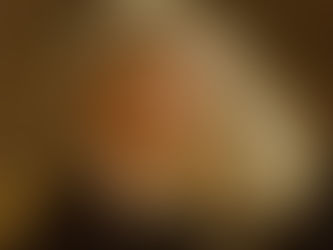top of page
Italian Art for Travelers
Your passport to culture, history, and art
Search


Claude Monet in Venice
Claude Monet painted over 500 pictures in the last twenty-eight years of his life. Thirty-seven of those were Venetian views inspired by his 1908 stay. Monet became smitten with the city and regretted not having visited and painted it earlier in his career. He called Venice “too beautiful to paint,” unsure initially if he could capture the city’s light and atmosphere.

Gerriann Brower
4 days ago7 min read


Fra Angelico and Fra Filippo Lippi: One was Pious, One went Rogue
Two friars became renowned early Renaissance Florentine painters. Fra Angelico was a pious friar whose faith was mirrored in his art and was later beatified. Fra Filippo Lippi, the rogue friar, fathered two children with a nun. Each was renowned for their innovation and style.
Born Guido di Pietro, Fra Angelico worked as a Dominican artist in Fiesole then Florence. “Fra” means “brother,” short for Fratello in a religious order. A prolific painter, his most famous frescoes are

Gerriann Brower
Oct 288 min read


Becoming a Saint
Saints Carlo Acutis, Margaret of Cortona, and Stephen are three of the approximately 10,000 saints recognized by the Roman Catholic church. Each saint has their own story reflecting culture, society, and the church. Carlo is the millennial saint, Margaret a medieval penitent, and Stephen an early Christian martyr.

Gerriann Brower
Sep 228 min read


Veronese’s Inquisition and Response
Veronese was a celebrated sixteenth century Venetian artist and the only painter summoned by the Inquisition. We have the transcript of his interrogation before the tribunal of the Holy Inquisition, and his stunning response to their charges. The role of images and art became a focus for inquisitors as they searched to counter the Protestant and Lutheran reformation. Religious and government officials comprised the tribunal who sought to keep artists in line with Catholic tea

Gerriann Brower
Aug 86 min read


Pope Leos Past and Present
For the fourteenth time, the name Leo has been chosen by a pope. What made Leo a popular papal name? Some reasons point to lions, St. Mark, and St. Augustine. A look at three past Pope Leos reveals the adversities they faced and their political dilemmas. One stood up to Attila the Hun, another avoided being poisoned, and a third focused on worker’s rights.

Gerriann Brower
Jun 108 min read


Pope Francis and Caravaggio
Caravaggio’s Calling of St. Matthew was Pope Francis’ favorite painting. As a cardinal, he would often contemplate in situ, in the Contarelli Chapel of San Luigi dei Francesi, near Piazza Navona. What drew Francis to this painting? Was it mercy for the artist’s sins and bad boy reputation, well-earned with a murder conviction? Or perhaps Caravaggio’s incarceration resonated with the pope’s ministry for those in prison.

Gerriann Brower
May 73 min read


Papal Conclaves: Histories and Mysteries
The Middle Ages hold the answer to the history and mystery of papal conclaves and their rituals. The origins of voting under lock and key in the Sistine Chapel, burning ballots, and cardinals clad in red date back over five hundred years. How did a two-thirds majority come to be the standard to elect a pope? How did the Sistine Chapel become the place to elect popes?

Gerriann Brower
May 16 min read


Artists at Work: Michelangelo, Leonardo, Raphael and Their Drawings
Drawings let us see the artist at work, thinking through problems. Michelangelo, Leonardo da Vinci, and Raphael’s drawings are like fingerprints or handwriting. Each had unique styles and methods of drawing. Raphael frequently drew hands. Michelangelo concentrated on the muscular torso or twisting body. Leonardo brainstormed on paper, keenly interested in nature and how the world around him worked.

Gerriann Brower
Apr 176 min read


John Hawkwood, Mercenary
Mercenary armies played a pivotal role in conflicts. John Hawkwood was an English mercenary commander who earned fame and fortune in Italy.

Gerriann Brower
Mar 159 min read


The Real Doge
What is a doge? A canine meme, a crypto currency, or an attempt to create a department of government efficiency? None of the above. The firs

Gerriann Brower
Feb 115 min read


Renaissance Bedrooms: Mattresses, Sleep, Dreams, and Pests
The Renaissance bedroom was the room where it happened, serving many purposes, including sleep, sex, childbirth, illness, recovery, death, a

Gerriann Brower
Jan 1110 min read


Consequential Conclaves
Three consequential sixteenth century conclaves illustrate the power wrangling and coalitions in electing a pope: the conclaves for Julius I

Gerriann Brower
Nov 12, 20249 min read


From Saul to Paul: Art Inspired by Paul the Apostle
Why are so many places and people named after Paul? Paul’s life story from persecutor to preacher inspired his namesake and art from convers

Gerriann Brower
Oct 1, 202411 min read


The Well-Dressed Duke: Renaissance Menswear
Clothes made the man, from his velvet doublet, brocaded codpiece to his armor.

Gerriann Brower
Aug 28, 202410 min read


St. Catherine of Siena's Stigmata and Relics
St. Catherine of Siena, was a gutsy fourteenth century history making woman. She was determined to make a difference, even with doubters and

Gerriann Brower
Jun 5, 20249 min read


The Secret Raphael Room
Need a peaceful place to enjoy art at the Vatican Museums? Look no further than the Raphael room. I call it the secret Raphael room because

Gerriann Brower
Apr 24, 202413 min read


Palatine View: Julius Caesar to Mussolini
The view from the Palatine Hill conveys the storied history of ancient Rome, Christian Rome, and modern Rome.

Gerriann Brower
Mar 22, 202414 min read


Renaissance Hair
Renaissance hair served dual functions. Hair beautified the individual and indicated well-being and character. The length and style of hair

Gerriann Brower
Jan 23, 20249 min read


Two Michelangelo Masterpieces: Pieta and David
Michelangelo’s fame was well founded after completing two early masterpieces, the Pietà and the David. Both speak to his creative genius.

Gerriann Brower
Dec 19, 202310 min read


Caravaggio’s Rome
Caravaggio was a violent man and a number of his paintings depict violent scenes. What was Caravaggio's Rome like?

Gerriann Brower
Oct 13, 202312 min read


The Last Masterpiece: A Book Review
The author presents readers with parallel stories of two young women from different countries, each playing a role in Nazi looted art.

Gerriann Brower
Sep 11, 20234 min read


Four Emperors that Built Rome
Debauchery and megalomania seem to define most Roman emperors. Four come to mind: Augustus, Nero, Vespasian, and Hadrian.

Gerriann Brower
Aug 20, 202318 min read


Four Popes that Built Rome
Four popes did much to shape the Rome we see today. The della Rovere, Farnese, Borghese, and the Barberini families each placed their own ma

Gerriann Brower
Jul 18, 202320 min read


From Renaissance Self-Portrait to Selfie
Are selfies an evolution of the self-portrait, or do they lack the cleverness and creativity of early modern self-images? The Italian Nation

Gerriann Brower
May 25, 202313 min read
bottom of page


